Expanding our understanding of reliability
For us to be able to effectively set up monitoring to improve our reliability, we're going need a good understanding of what sort of things we might consider measuring. In this unit, we hope to suggest some possibilities that might expand your understanding of reliability.
Let's look at some aspects of reliability now:
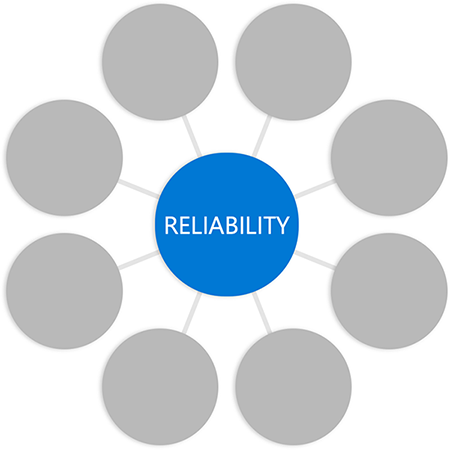
Availability
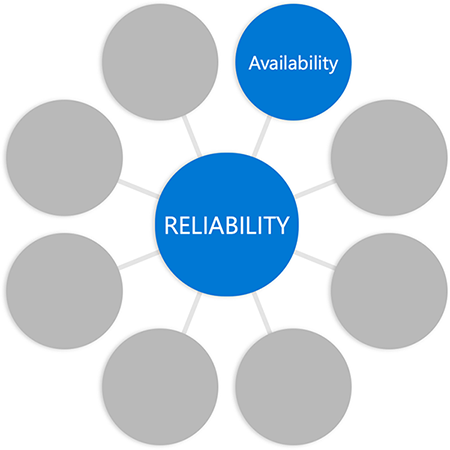
When people talk about reliability, they tend to start with availability. Is the system "up" or is it "down?" Can others reach your website or your service? Can they use the product when they expect to? It's important from the perspective of both external customers and internal users who depend on your service. Availability is probably the aspect of reliability with which you'll spend the most time working. It's a good starting point for discussing reliability, but it’s only one aspect.
Latency
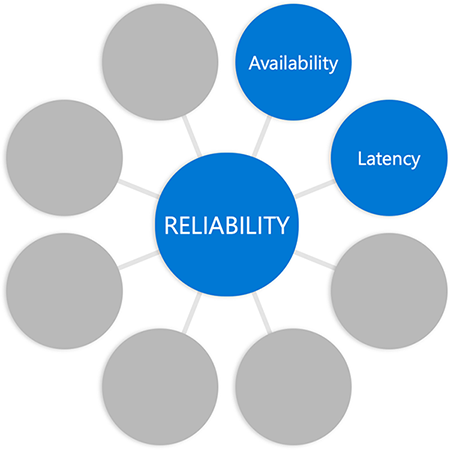
Latency refers to the amount of delay between a request and a response. You might have heard the catchphrase "slow is the new down." People demand fast performance, and they lose patience with a site or service that leaves them waiting. We have good research that shows that if a website doesn't meet their expectations for response time, customers are likely to go to a competitor.
Throughput
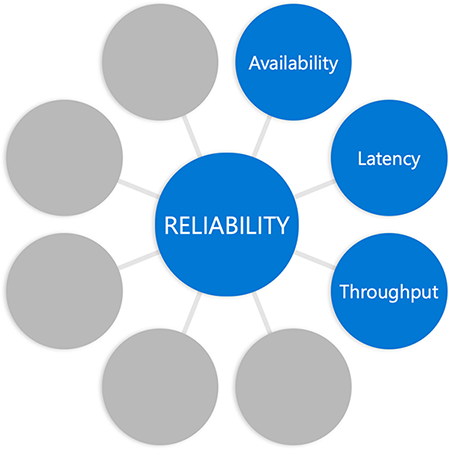
Throughput is a measure of the rate at which something is processed, or the number of transactions that a website, application, or service successfully handles over a specified period of time. This is particularly important when running pipelines or batch-processing systems. If a pipeline or a batch-processing system isn't processing things fast enough, that's not meeting our expectations and it isn't considered reliable.
Coverage
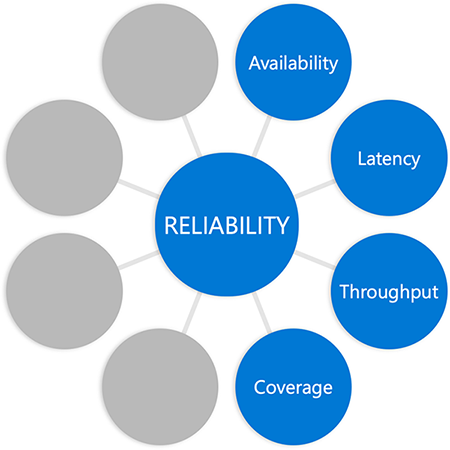
Coverage refers to how much of the data that you expected to process was actually processed. Again, we come back to the idea of measuring how well we're meeting expectations as part of determining if something is reliable.
Correctness
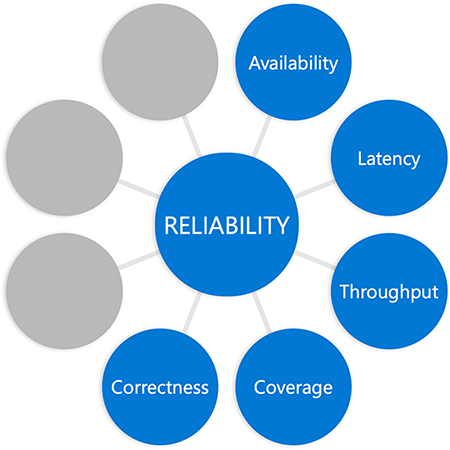
Correctness is an aspect of reliability that's often overlooked. Did the process that you ran on the data yield the correct or expected result? This is an important factor to include in monitoring for reliability. No matter how fast or "always available" your service or site is, if it returns incorrect results, it’s not reliable in the eyes of your customers. Monitoring for correctness of results is an important part of monitoring for reliability.
Fidelity
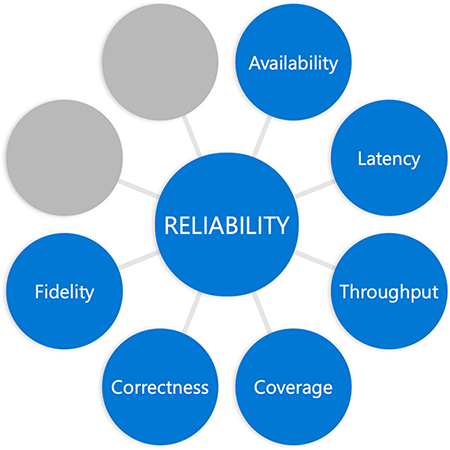
Fidelity in this context is best understood through an example. Let's say you visit the home page of a video-streaming site. That page is made up of separate sections: new releases, personalized recommendations, top 10 movies watched, and so on. Each of those sections is likely generated by a separate back-end service. If one of those services goes down—for example, the personalization engine—visitors to the site don't get a "Sorry this site is down" message or a blank page. Instead, they see a home page with that section either removed or replaced with static content. In technical terms, we'd say they received a "degraded" experience instead of the complete intended page.
If we were to measure fidelity, we'd be measuring how often the user of a service received a "degraded" experience versus the full experience (complete fidelity). This measurement is useful for any fault-tolerant service that has the ability to continue running in a degraded mode when something goes wrong.
Freshness
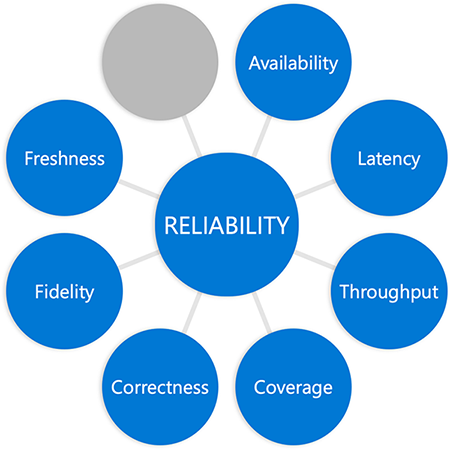
Freshness refers to how up to date the information is in situations where timeliness matters to the customer (for example, services that provide sports scores or election results). Those services are considered reliable if the data they provide is kept current.
Durability
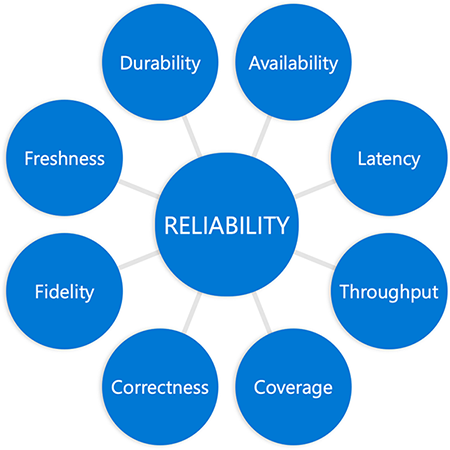
Durability is another slightly more niche aspect of reliability. If you're running a service that provides storage, you know just how important it is that data a customer writes to your service can be read later. This is a durability expectation.
Even though this is not an exhaustive list of possibilities, hopefully there were a few you hadn't considered, and you've expanded your understanding of reliability in the process. We're going to take this understanding into the next unit where we start to ask some crucial questions about just what we'll want to measure when it comes to reliability.